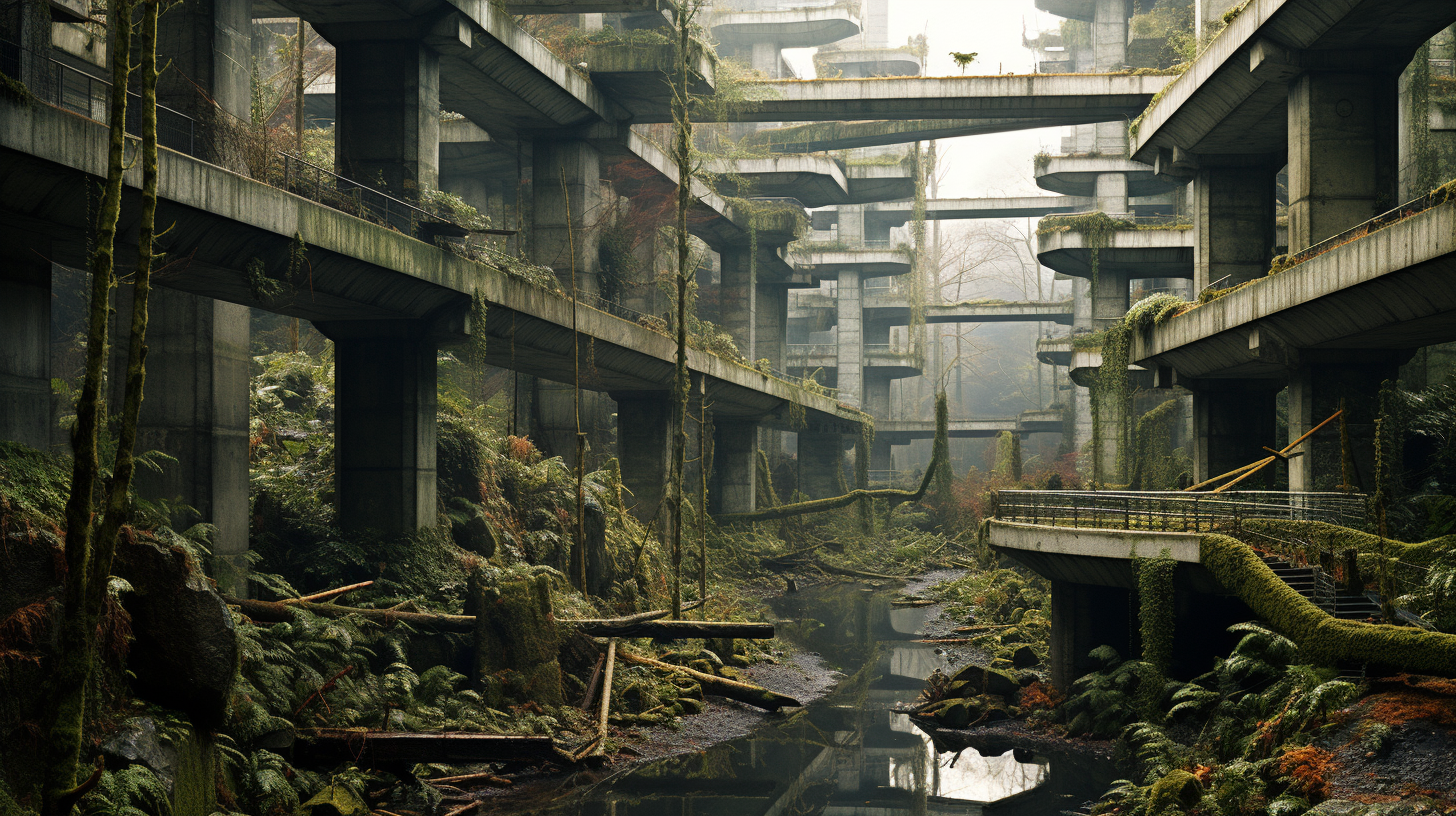The world we once knew, lush with vibrant ecosystems, has been supplanted by the relentless spread of grey. Skyscrapers tower where ancient trees once reached for the sky, their roots replaced by foundations burrowing into the earth’s scarred crust. Welcome to the vast expanses of our planet’s new dominant terrain: the concrete jungles—our last remaining habitats.
Our journey here was not sudden; it was a slow creep of civilization, asphalt and steel blanketing the land. The Anthropocene’s signature is familiar: an endless maze of structures, streets devoid of soul, air choked with the exhaust of progress. Once majestic cities, now stand as the solitary refuges for humanity, tombstones for what was lost in our hunger for expansion.
‘To see the world in a grain of sand…’, wrote Blake, but what world remains in the granules of concrete under our feet? The songs of birds are replaced by the horns of traffic, and the rustling leaves give way to the hum of air conditioners. Even as we mourn the loss of what was, there is an eerie beauty in this desolation; the sheer might of human endeavor stands as a bittersweet testament to our capabilities and our failures.
The dysbiotic spread of urban life has become the last stand for many species, including our own. Pigeons and rats have evolved to navigate the steel canyons, while house sparrows make nests in the crevices of our high-rises. Nature, in its relentless perseverance, clings to life in the smallest patches of dirt and sky it can find amongst the concrete. However, this is no longer a world of diversity and symbiosis, but one of survival against the odds in a landscape not meant to sustain life.
In the seas, our coral reefs are now underwater graveyards; the once vibrant underwater cities now silent monuments to the past. Our forests, those great lungs of the earth, have burnt out or been felled to the very last, their ashes spread across the barren land. And in their absence, our own breaths grow shallow, laden with the toxins of a broken environment.
Children in this dystopian present wonder at the mockeries of nature provided by virtual reality, never to know the feel of wild grass underfoot or the thrill of a forest’s mystery. Their reality is a synthetic one, where daylight comes not from the sun but from the muted glow of screens, where stars are not celestial bodies but the flickering lights of drones maintaining the facade of order in a world teetering on the brink.
Yet despite the despondency, there resides a perverse sort of hope within the human spirit—a denial not of facts, but of defeat. Architects and visionaries, with what might be seen as quixotic persistence, forge ahead with designs of vertical forests and green buildings. Their attempts at integrating plants into the built environment speak of a non-conceded battle against an inanimate future.
Are these the acts of Sisyphus—forever pushing against the inevitable? Or are they the flickering flames of a species inherently averse to succumbing to the darkness they helped manifest? These ‘green initiatives’ could be seen as mere window dressing, the token greenery atop a parking garage, or perhaps they are the embers from which a new understanding of coexistence could arise.
It may be too late to reverse the damage done, yet it is this very despair that urges some to imagine, to challenge, to reinvent. Although the concrete jungles stand as a stark reminder of Greta Thunberg’s unheeded warnings, they also serve as the canvas upon which the few remaining dreamers paint their hopes for reconciliation with nature – not to restore a lost past, but to salvage any future.
As we bear witness to the last havens of humanity, besieged by our creations, we are left to ponder: Will our towering monoliths stand as the final chapter in the tale of a species or as a turning point toward an enlightenment born from the rubble? The answer, it seems, is set in concrete yet to cure.
